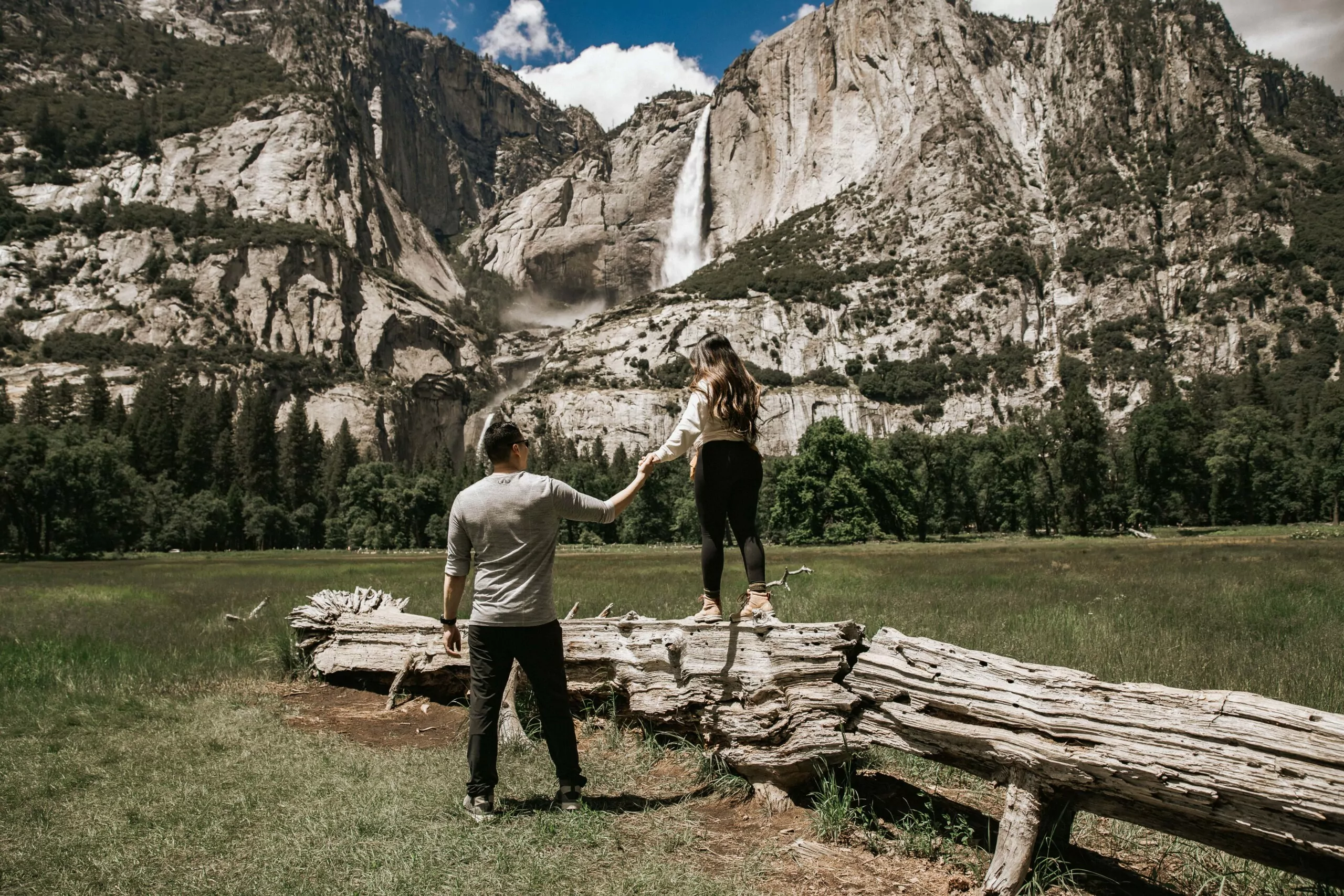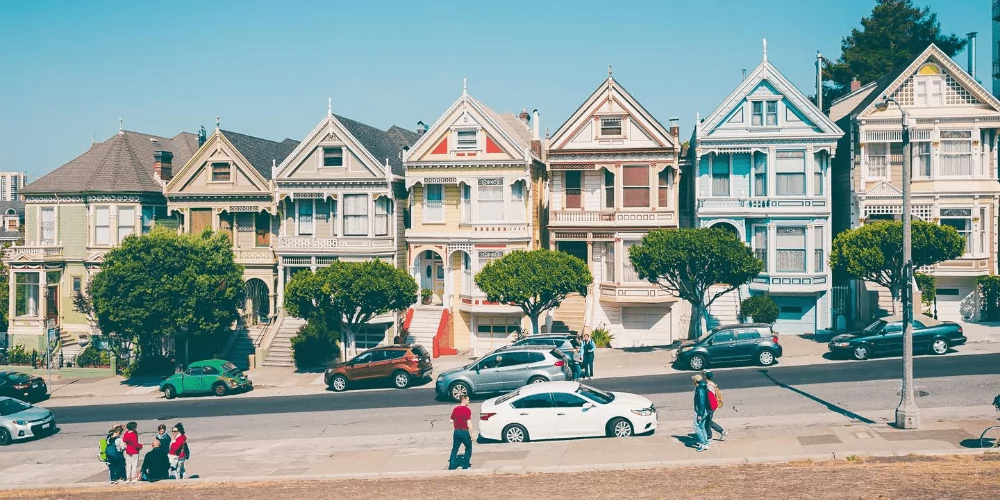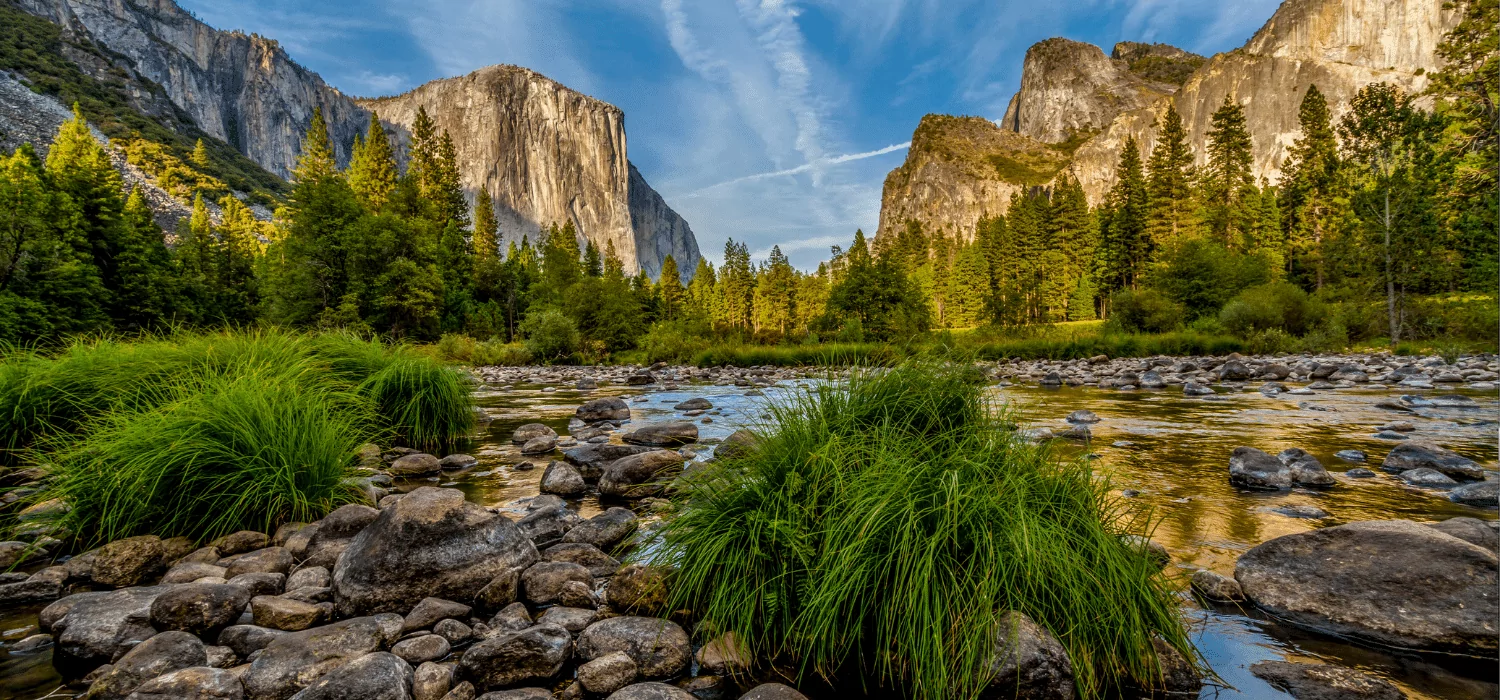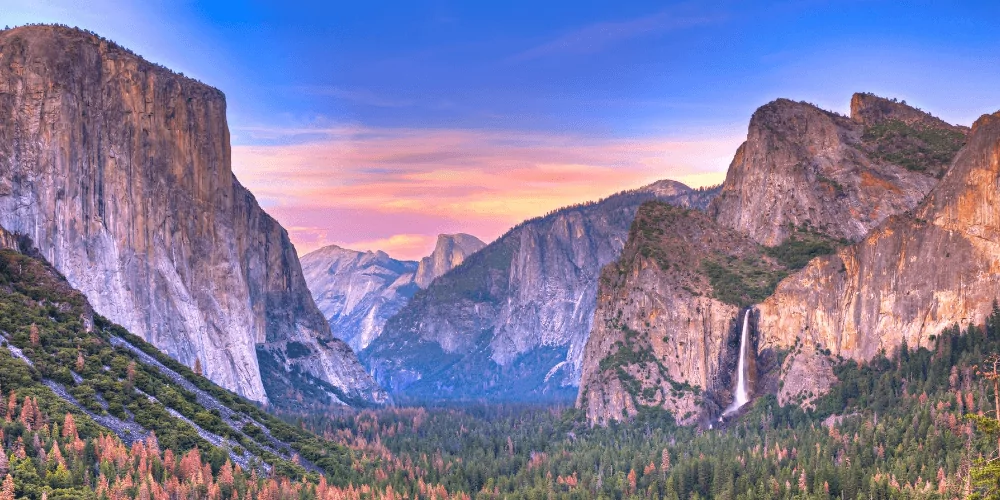-
Things to Do in Yosemite Valley: Quick Guide
If you’re planning a trip to Yosemite National Park, chances are you’ll be looking for things to do in Yosemite Valley at some point on your trip. This is one of the most central parts of the park, and the gateway to some of its most popular hikes and attractions.
But hiking isn’t the only thing to do in Yosemite Valley. This guide will show you what to see, where to stay, and all the best things to do there during your trip — including both hiking and non-hiking activities alike.
So if you’re wondering how to get to Yosemite and what to do while you’re there, look no further than this ultimate guide to Yosemite Valley.
- Basic Yosemite Valley Info
- Essential to Know Before You Go
- How to get to Yosemite Valley
- Best Time to Visit
- How to Get Around Yosemite Valley
- Yosemite Valley’s Not to Miss Sights
- Best Hikes In Yosemite Valley
- Non-hiking Things to Do in Yosemite Valley
- Where to Stay in Yosemite Valley
- Where to Eat in Yosemite Valley
- What to Pack for a Trip
- Visit Yosemite Valley Safely and Responsibly
- Yosemite Valley FAQ
Basic Yosemite Valley Info
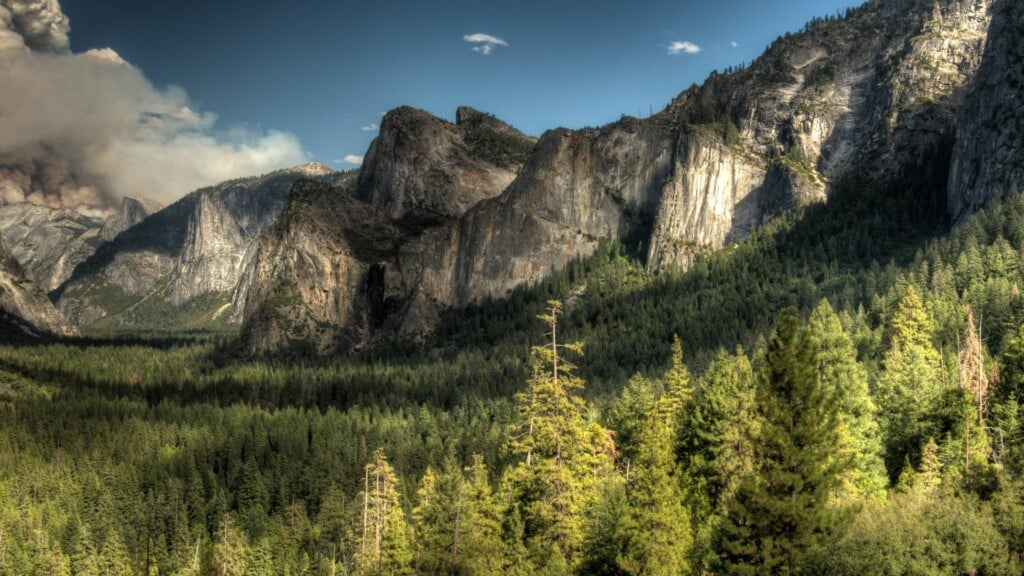
What: Yosemite National Park encompasses nearly 1,200 square miles of protected wilderness managed by the National Park Service. It’s been under federal protection since 1864, when Abraham Lincoln signed the Yosemite Grant, and has been attracting visitors from around the world ever since.
While the huge park includes areas like Hetch Hetchy, Tuolumne Meadows, Mariposa Grove, and Crane Flat, many visitors spend most of their time in the 1-mile wide, 7-mile long Yosemite Valley. This is because some of Yosemite’s most scenic attractions are conveniently situated between the valley walls.
Where: Yosemite National Park is located in the Sierra Nevada Mountains in East Central California, about 190 miles from San Francisco. The Yosemite Valley lies just south and west of its center and is the metaphorical beating heart of the park. It is accessible by road — by personal vehicle, tour bus, or public transportation — through four park entrances.
When: Yosemite Valley is open every day — 365 days a year — and each season offers a unique experience. While weather conditions and crowds can vary throughout the year, there’s never a bad time to visit Yosemite Valley — as long as you check the forecast and plan ahead!
Why: Yosemite Valley attracts visitors with roaring waterfalls, granite cliffs, a meandering river, and unique flora and fauna. And that’s even before getting to Yosemite’s most famous landmarks, like El Capitan, Half Dome, and Yosemite Falls. They’re all visible from the valley — making it a photographer’s dream and a haven for hikers, rock climbers, and other outdoor enthusiasts.
Essential to Know Before You Go
Yosemite Entrance Gates and Fees
Yosemite National Park has five entrances, but only these four provide access to Yosemite Valley:
- Big Oak Flat: Open year-round via Hwy 120; best way to get to Yosemite from San Francisco; 45-minute drive to the Valley.
- Arch Rock: Open year-round via Hwy 140; another convenient route from San Francisco; 25-minute drive to Yosemite Valley.
- South Entrance: Open year-round via Hwy 41; best for traveling from Los Angeles, San Diego, or Sequoia National Park; 1-hour drive to the Valley.
- Tioga Pass: Usually open May – October; it’s the only Eastern entrance to the park for travel from Lake Tahoe or Las Vegas; 1-hour, 45-minute drive to Yosemite Valley.
You can pay the entrance fee ($35 per vehicle) at any entrance gate, but only debit and credit cards are accepted. If you plan to visit at least three national parks in the next year, get an America the Beautiful Pass ($80) to save some money and some hassle.
How to get to Yosemite Valley
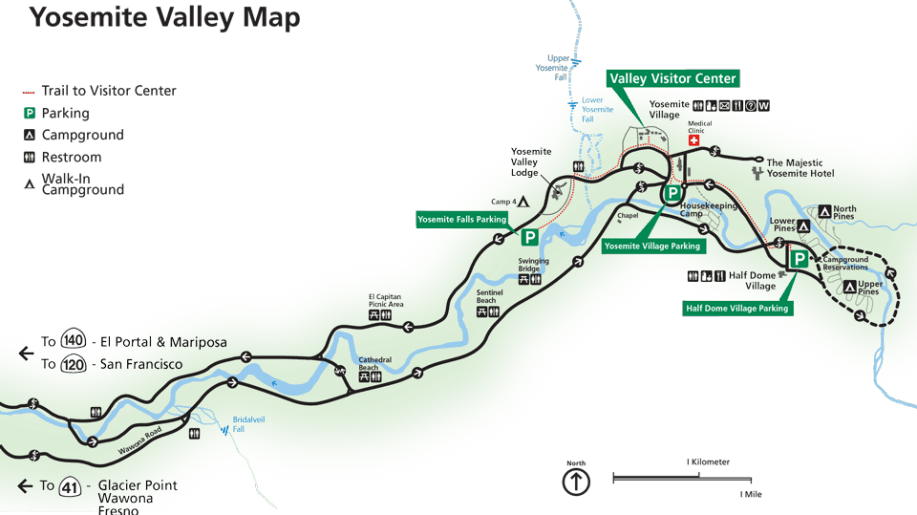
San Francisco is the perfect place to begin your trip to Yosemite Valley. With a bustling international airport, countless rental car options, and incredible tour companies, you can’t ask for a better home base. Plus, it’s a beautiful city full of fun things to do and worth a visit in its own right!
You have four main options to get to Yosemite from San Francisco: car, public transit, day trip, or overnight tour.
If you plan to make your way to Yosemite on your own, you can either rent a car or take public transportation. Most visitors take either Hwy 120 to the Big Oak Flat Entrance, or Hwy 140 to the Arch Rock Entrance. Hwy 120 is usually the faster choice, while 140 is a bit more scenic.
Riding the public bus to Yosemite is a hassle with tricky connections, so if you choose public transport, we recommend taking the Amtrak train (San Joaquin line) to Merced. From there, take the Yosemite Area Regional Transit System (YARTS) bus for the final leg into the park and on to Yosemite Valley. One benefit is that park entry is included in the YARTS ticket price!
The easiest way to visit Yosemite Valley is to take a tour. Tours come in all shapes and sizes to suit every schedule. If time is tight, hop on a one-day Yosemite tour to take in the must-see sights with a seasoned guide.
If your schedule allows you to spend more time in Yosemite Valley, consider a multi-day tour with Extranomical. You can pick from one of our partner hotels, or book your accommodation separately. Either way, let us worry about the logistics of getting you to and from Yosemite Valley so you can relax and enjoy the experience!
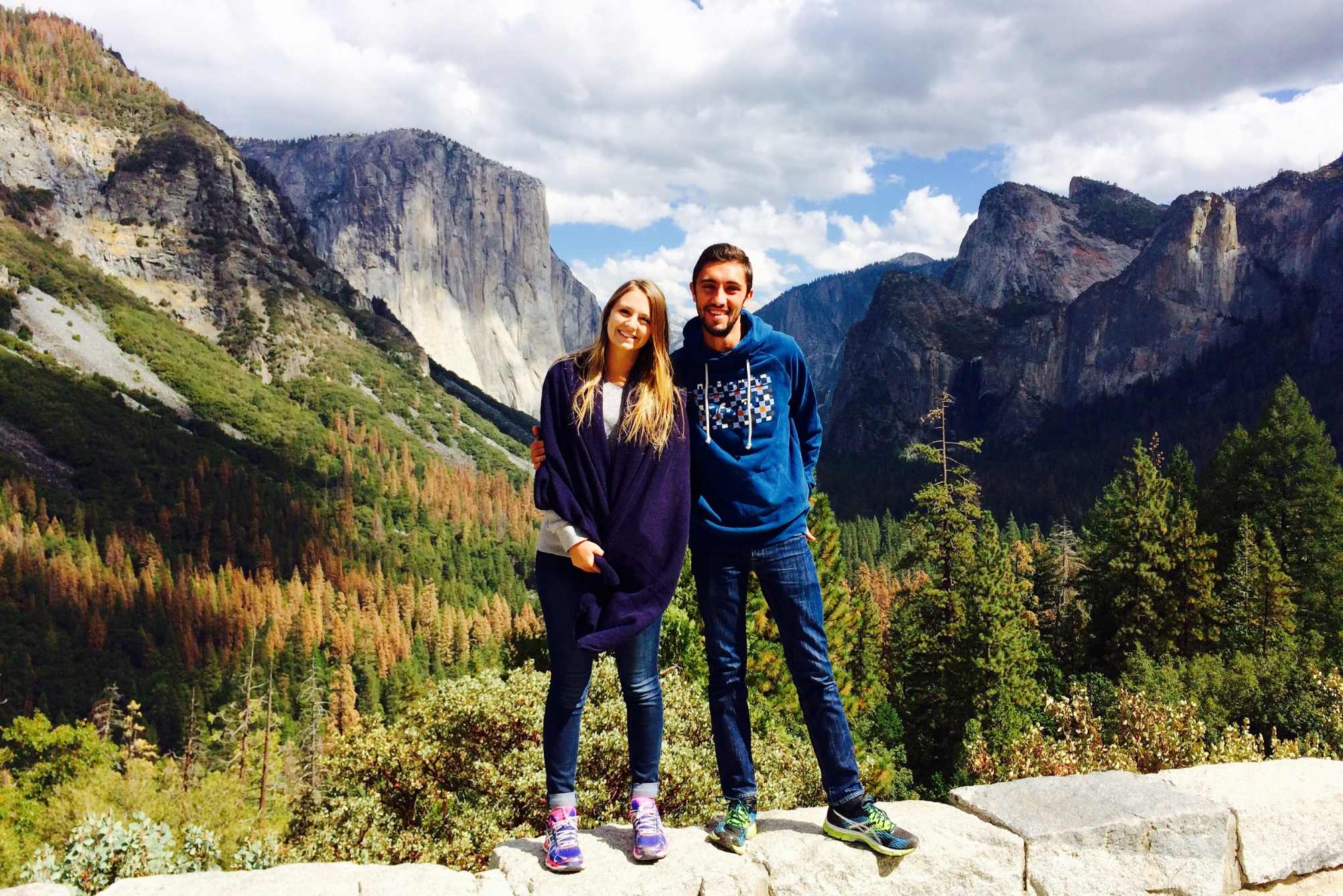
Yosemite and Giant Sequoias One Day Tour from San Francisco
The only 1-day Yosemite National Park tour from San Francisco to deliver more than you dreamed at Half Dome, El Capitan, Yosemite Falls, and on a hike to Giant Sequoias.
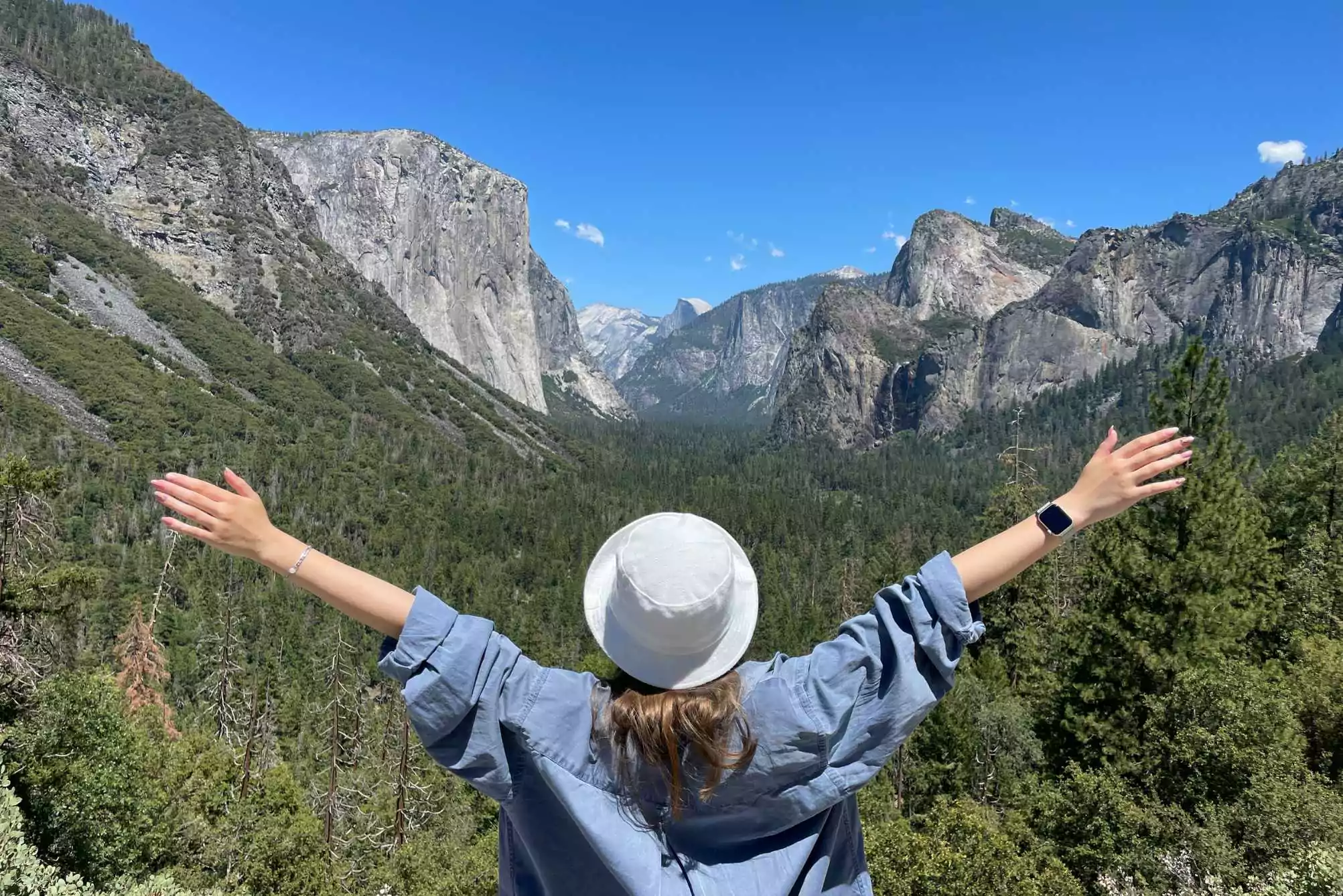
Yosemite 2-Day Tour from San Francisco with No Overnight Accommodation
This Yosemite tour from San Francisco let’s you make your own overnight stay so you can slow the pace to experience Half Dome, El Capitan, Yosemite Falls and the Giant Sequoia redwoods.
Best Time to Visit Yosemite Valley

There’s no bad time to visit Yosemite Valley. But if you have a specific trip or sites in mind, we can help you determine which season is best. The best time to visit Yosemite will depend on your activity preferences and your tolerance for snow, hot weather, and crowds.
Here’s what to expect from each season:
Spring in Yosemite Valley is the waterfall chaser’s dream. Snowmelt roars over the rocky ledges and into the Merced River, creating some of the most iconic Yosemite scenes. Wildlife also becomes more active as the valley warms, increasing your chance of sightings.
Summer in Yosemite Valley is crowded, and parking is tough. But it can be worth the effort, because all of the park roads are open and the weather is great for hiking and swimming. If you’re looking for waterfalls, go early in the summer before they start to dry up in July or August. Be sure to make reservations well in advance for this season.
Fall in Yosemite Valley is lovely in a different way. The leaves and light are changing, so this is a great time of year for photographers. Fans of milder weather will prefer hiking once the summer heat passes. Keep in mind that most of the waterfalls and seasonal lakes have run dry by this point.
Winter in Yosemite Valley is spectacular. The snow that blankets the valley makes for extra special photographs and spreads a peaceful hush across the park. Some roads and sections of Yosemite Park are closed seasonally, but Yosemite Valley remains open and accessible 365 days a year!
How to Get Around Yosemite Valley
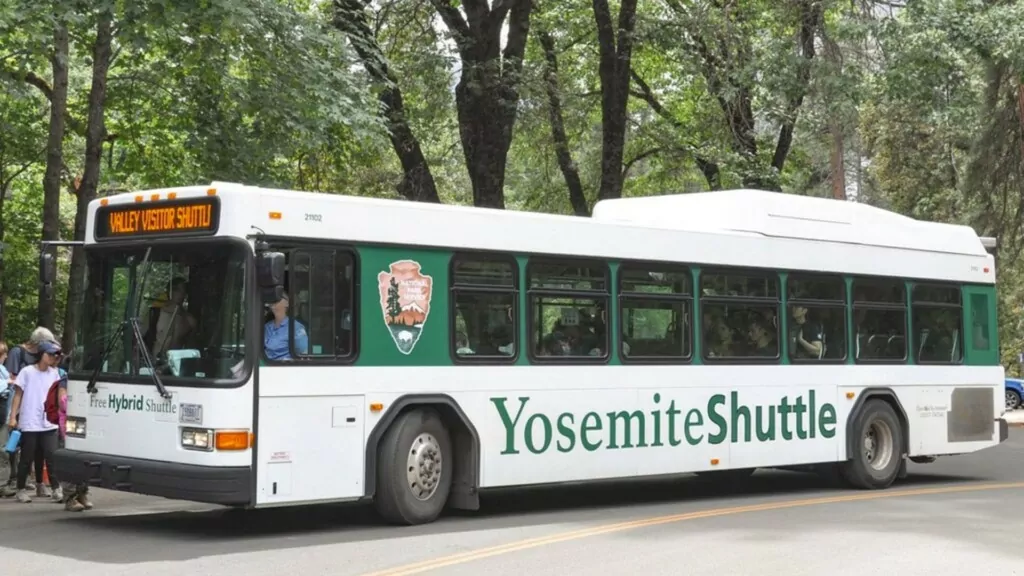
One of Yosemite National Park’s best man-made features is the free shuttle service in Yosemite Valley. There are two routes: the Valleywide Shuttle, and the East Valley Shuttle. They arrive at least every 22 minutes, from 7am-10pm, seven days a week. These shuttles visit each hotel and major site in the valley and will save you a lot of headache — and time spent in traffic.
Driving your own vehicle to Yosemite Valley is convenient until you have to park it. Our recommendation is to get to the valley early and leave your car there for the day. Then take the shuttle to all of the hikes and viewpoints so you don’t have to worry about missing out due to a full parking lot.
Yosemite Valley’s Most Unmissable Sights
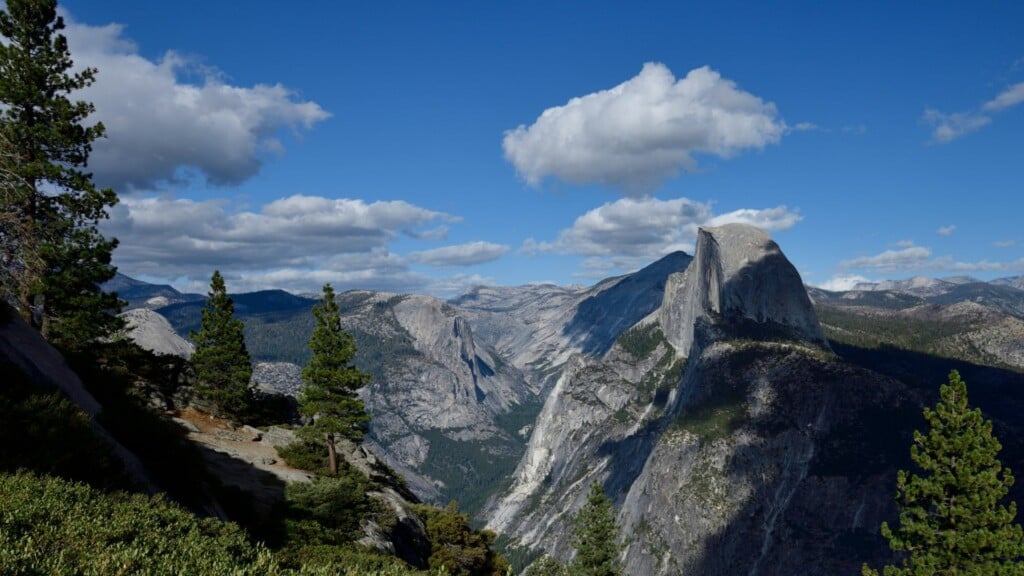
A trip to Yosemite Valley doesn’t have to include the most popular sights to be worth it — but there are a few major landmarks that most visitors want to see and photograph. The good news is you won’t have to try hard to see the most impressive sites in Yosemite Valley. They rise above the valley in epic fashion, practically demanding your attention. They include:
- El Capitan – You can’t miss this massive rock monolith towering over the valley. The most impressive views are from right below in El Capitan Meadow (Shuttle Stop #9), Valley View (on Northside Drive), and Tunnel View (on Wawona Rd., just 15 minutes from the valley).
- Half Dome – Once again, you’ll find it hard to overlook this iconic sight! You’ll see spectacular views of Half Dome from Cook’s Meadow and Sentinel Bridge (Shuttle Stop #6), Stoneman Meadow (near Curry Village), and Tunnel View.
- Yosemite Falls – These impressive falls are best seen from the Lower Yosemite Falls Loop Trail (Shuttle Stop #6), as well as Cook’s Meadow and Swinging Bridge (Shuttle Stop #6).
- Bridalveil Fall – This famous waterfall can be admired from Tunnel View, Valley View, and several turnouts along Northside Drive. It’s easiest to see with a car or on a tour.
- Tunnel View – This is the most famous viewpoint in the entire park, with a sweeping view of the valley — including Bridalveil Fall, El Capitan, and Half Dome. This viewpoint is technically not in the valley, because it’s a view of the valley from above, but we wanted to mention it because it’s only a 15-minute drive from the valley and definitely worth the trip. It’s an included stop on most Yosemite tours!
Best Hikes In Yosemite Valley
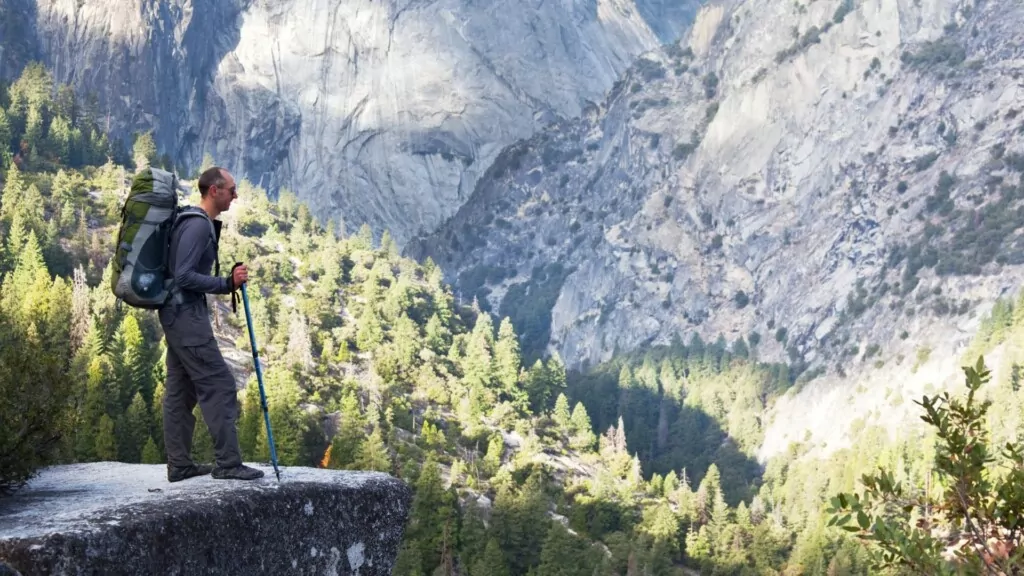
You probably already know that Yosemite Valley is a hiker’s paradise. But it’s not just for experienced hikers — there are short, paved, accessible trails too. And you don’t even have to compromise on the view: some of our favorite views are from the valley floor, just steps from the road.
Here are a few of the best easy Yosemite Valley hikes, and then a handful of more strenuous hikes for those ready for a challenge:
Easy Yosemite Valley Hikes
- Cook’s Meadow (Shuttle Stop #5 or #6) – This 1-mile flat loop features boardwalks and incredible views, including Half Dome, Yosemite Falls, and Glacier Point. If you’re feeling up for it, extend your walk into Sentinel Meadow and across Swinging Bridge.
- Lower Yosemite Fall Loop (Shuttle Stop #6) – A 1-mile paved loop with only a 50-foot elevation change and several beautiful views of the falls.
- Mirror Lake (Shuttle Stop #17) – A paved, 2-mile round trip to the lake or a 5-mile loop around. Lucky hikers can see a reflection of Half Dome in the lake — but keep in mind that the lake dries up during summer.
Hard Yosemite Valley Hikes
- Vernal and Nevada Falls (Shuttle Stop #16) – A 5.4- or 8-mile loop to the top of Nevada Fall, via the Mist Trail or John Muir Trail, respectively. The Mist Trail is undergoing construction with weekday closures from July-October 2025. Check here for updates.
- Upper Yosemite Falls (Shuttle Stop #7) – A strenuous 7.2-mile roundtrip to the top of North America’s tallest waterfall, with close-up views along the way. It begins near Camp 4.
- Four-Mile Trail (Shuttle Stop #11) – This 9.6-mile hike is a difficult but rewarding way to get to Glacier Point, with 3,200 feet of elevation gain. The full trail is generally open May-Nov, depending on snowfall.
- Half Dome (Shuttle Stop #14 or #16) – This famous route to the top of Half Dome is 14-16 miles round-trip, with 4,800 feet of elevation gain. You’ll need a lottery permit when the cables are up.
Non-hiking Things to Do in Yosemite Valley
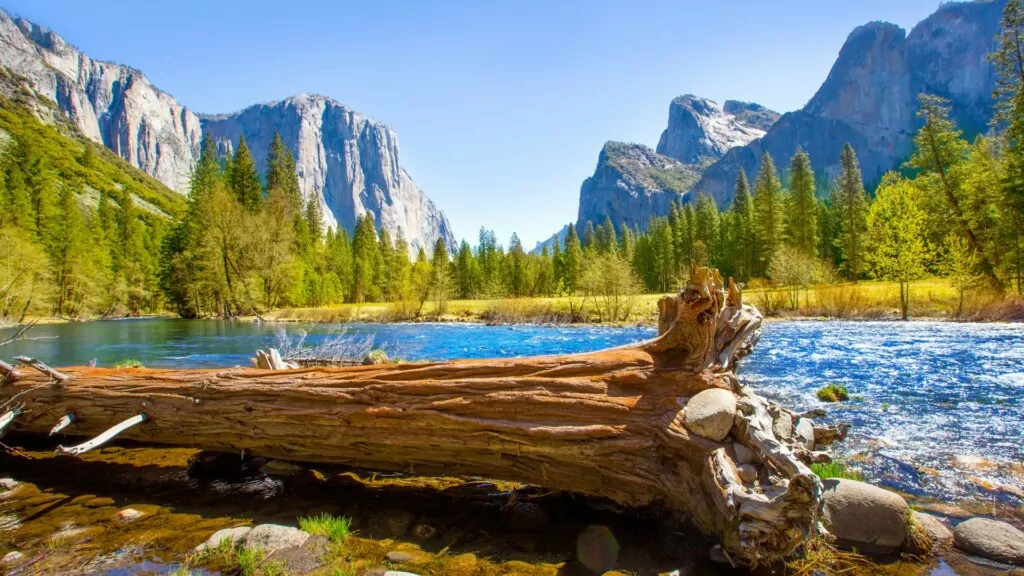
Yosemite Valley isn’t just for hikers and climbers — you can have an incredible time even if you never set foot on a trail! A lot of guides leave out non-hiking activities in Yosemite Valley, so we’ve made sure to include some here:
- Bike – Bring your own bike or rent one at your accommodation or via the free bike share program. There are at least 12 miles of paved bike paths throughout the valley, perfect for a scenic and leisurely ride.
- Swim, float, or fish the Merced – Yosemite isn’t known for water sports, but the Merced is a beautiful river that’s perfect for swimming and other seasonal activities during the summer.
- Visit the Welcome Center – The new Yosemite Valley Welcome Center (Shuttle Stop #1, 2, 4 or 5) has exhibits that cover the formation of the area and the wildlife that live here. There’s even a free film.
- Admire and photograph the views – Snap a new profile picture, practice your composition skills, or just get that perfect picture to remember the trip. Use this article to find the best photo spots in Yosemite, many of which are right in the valley.
- Join a program – Attend a ranger talk, a photography walk, or even an art class. Take a look at Yosemite’s calendar of events here.
- Ride the open-air tram – The Yosemite Valley Floor Tour is a fun way to see the valley if you don’t have a vehicle. It operates as an open-air tram in the summer, and as a closed bus tour Oct-May.
- Museum and gallery hop – Visit the Yosemite Museum to learn about the cultural history of the valley, complete with demonstrations on the basket-weaving and traditional games of Yosemite’s early inhabitants. Then head to the Ansel Adams Gallery to see the valley through the famous photographer’s lens.
- Star gaze – If you’re staying late or overnight, don’t forget to look up at the stars! You can even try your hand at astrophotography.
- Picnic – Often, the best way to experience a place is to stop and have lunch! Just don’t feed the wildlife or make your own picnic spot off the beaten path. There are designated picnic areas throughout the valley that are first-come, first-serve.
Where to Stay in Yosemite Valley
If you are lucky enough to have a couple of days to explore Yosemite Valley, you will need to pick a place to stay. Our recommendation is to stay within the Valley itself. Yes, it will be more expensive, but we think it is worth it.
Staying in Yosemite Valley means the earliest access. You don’t have to wake up early to drive to an entrance gate, and then maybe wait in line — you are already in! You will have no trouble getting to viewpoints before the rush, or lingering at them as the crowds drive home. And Yosemite Valley at night is unmissable. Enjoy every possible minute in the park by staying in the valley.
Hotels in Yosemite Valley
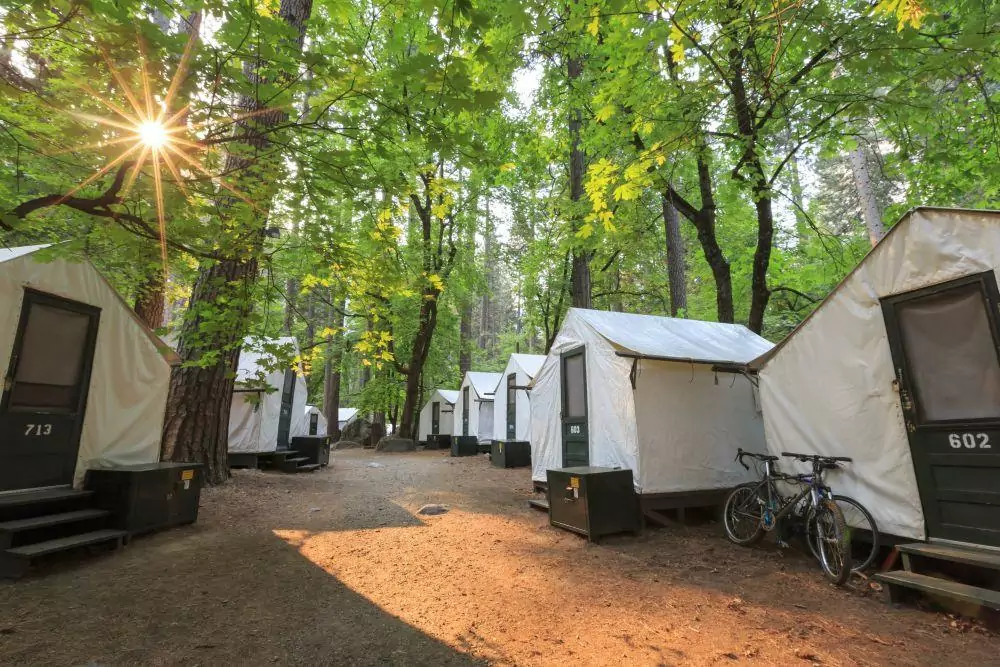
There are two traditional hotel options within the valley: the historic Ahwahnee Hotel and the Yosemite Valley Lodge. Both are in prime locations, accessible by the free valley shuttle, bursting with amenities, and open year-round.
For a more rustic, budget-friendly experience, consider staying at Curry Village. They offer traditional, canvas-sided tent cabins and simple motel rooms in the east end of the valley. They are open most of the year, with limited weekend-only availability from January to March.
Hotels Close to Yosemite Valley
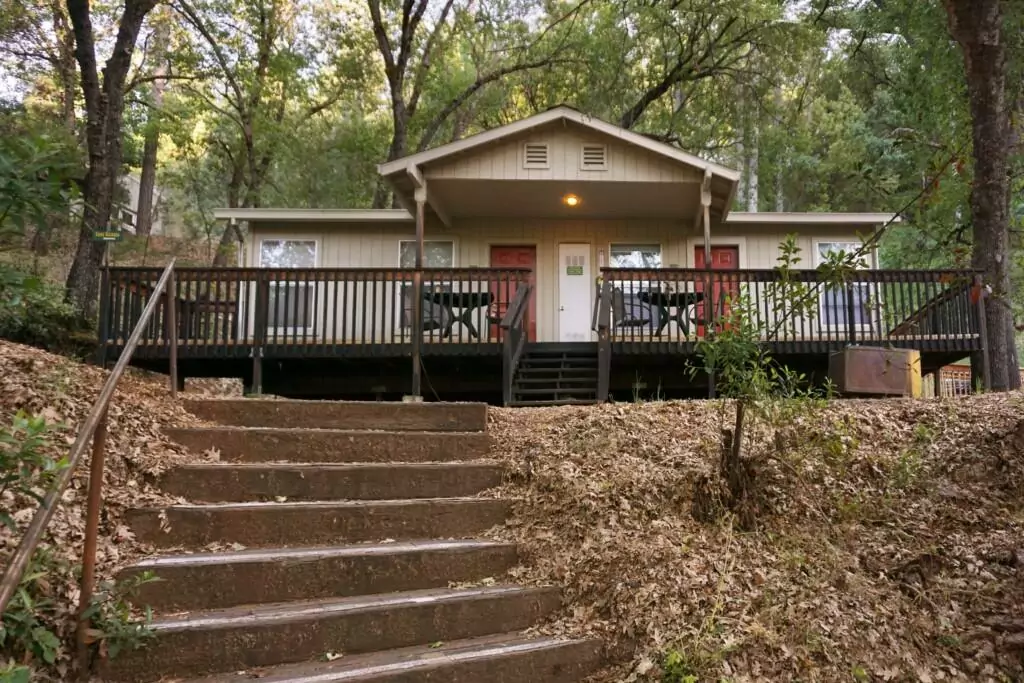
If none of those options seem quite right, or they’re booked up (this happens surprisingly early!), there are great options just outside the park. While these recommendations will require a YARTS bus ride to reach the valley, they are still convenient, great places to stay for a Yosemite vacation.
Heading along Hwy 140, you’ll find the View Lodge, the Cedar Lodge, and the Bug Rustic Mountain Resort (in order of distance). The View and The Cedar are the more traditional lodging options. Both are situated on the river with multiple pools and spas, game rooms, and classic hotel rooms. The Cedar Lodge even has three onsite dining options.
The Bug Resort is a quirky property with a variety of lodging options. Choose from traditional hostel-style dorm rooms, private rooms, cabins on stilts, or glamping tents. While furthest from Yosemite Valley (34 miles on YARTS), the Bug Lodge delivers on rustic charm and sustainable fun. They also have a great little restaurant on site.
Camping in Yosemite Valley
Of course, you don’t need to sleep within four walls in Yosemite — some would say that camping is the best way to experience it!
There are four campgrounds in Yosemite Valley, but Upper Pines and Camp 4 (walk-in) are the only ones that are open year-round. Reservations are required for all park campgrounds from April to October, and spots fill fast. There is a limited selection of first-come, first-served sites available October – May.
For a complete list of campgrounds in Yosemite — including their estimated seasonal opening dates — head to the National Park Service website.
Where to Eat in Yosemite Valley
If you haven’t brought your own food, there are plenty of great places to eat in Yosemite Valley, ranging from grocery stores to casual outdoor eateries to the upscale dining experience offered at the Ahwahnee.
Eating at The Ahwahnee
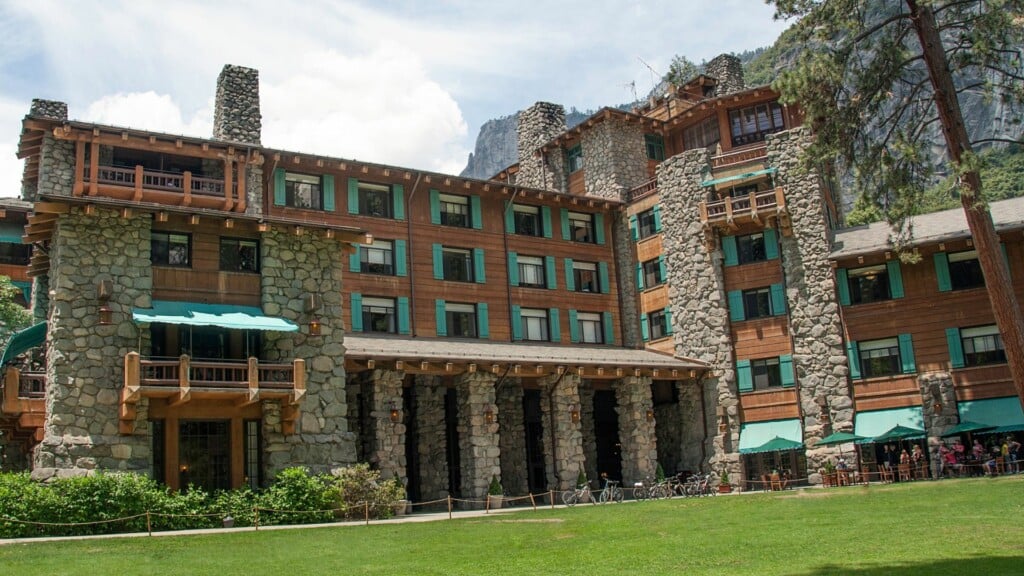
Everyone should visit the Ahwahnee hotel during their visit — even if you aren’t staying there. The building is historic and the setting is unmatched. Make your way to the Ahwahnee by walking 45 minutes up from the valley, or by taking the Valleywide Shuttle to stop #3.
While renovations are taking place in the main dining hall, a buffet-style dinner is available in their Great Lounge, Solarium, and Winter Club Rooms. See this page for their dress code and updates on the dining room renovation.
Eating at the Yosemite Valley Lodge
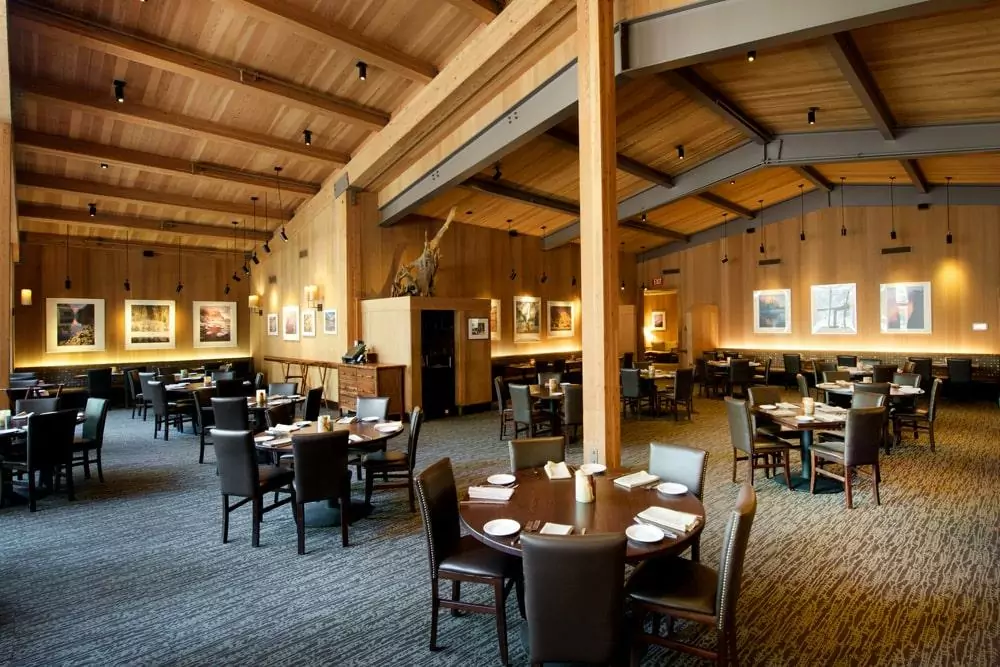
The Yosemite Valley Lodge (Shuttle Stop #7) offers several year-round dining options at the base of Yosemite Falls. Head to the Mountain Room Restaurant or Lounge for upscale food and drinks, or to the Bear Camp Eatery for casual food court fare and a Starbucks.
Eating in Curry and Yosemite Village
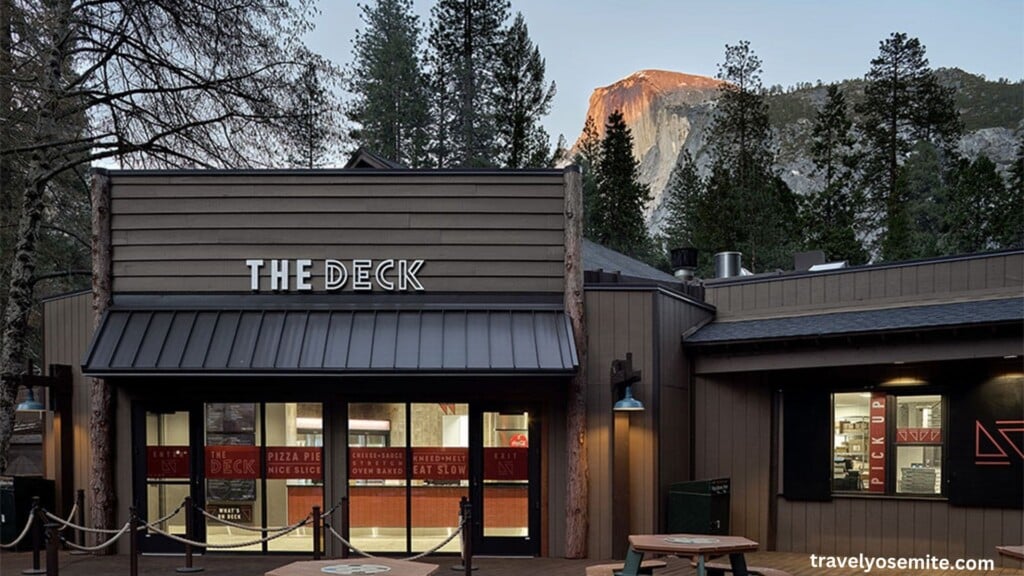
Curry Village (Shuttle Stop #14) offers several casual dining options, including seasonal outdoor dining at the Meadow Grill and Pizza Deck, and year-round indoor dining in the newly reopened Seven Tents Pavilion.
In Yosemite Village (Shuttle Stop #2,4,5) you’ll find the Village Store, complete with all you need to pack a lunch for the trail or a picnic, and seasonal outdoor dining. Degnan’s Bakery provides a la carte breakfast and lunch fare, while The Loft serves pizza, sandwiches, and salads for casual sit-down eating.
What to Pack for a Trip to Yosemite Valley
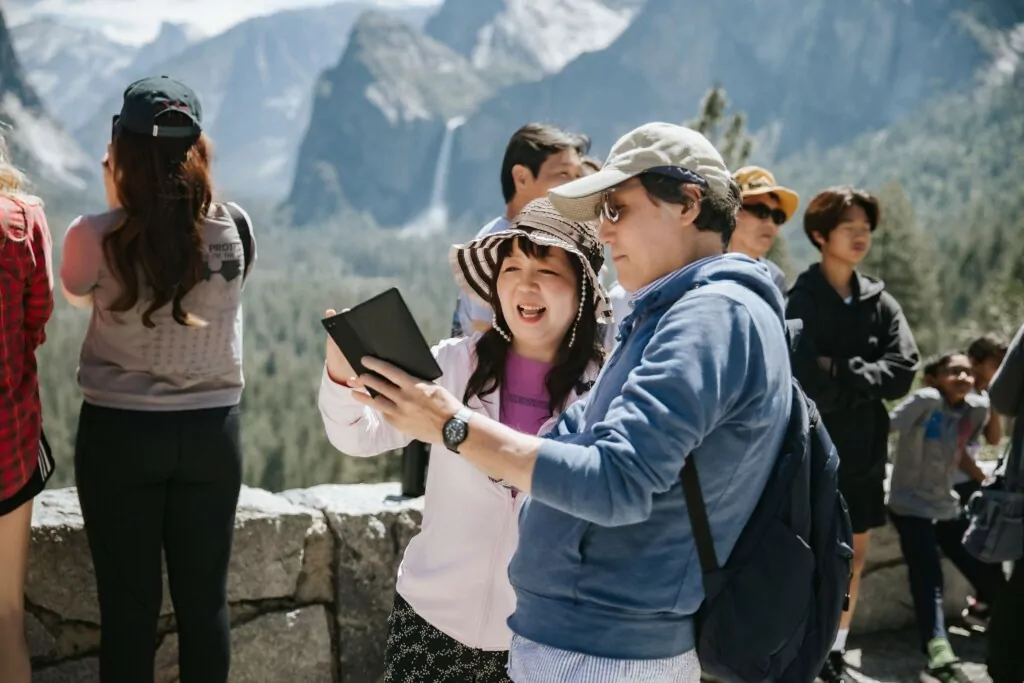
Unless you’re planning to stay or eat dinner at the Ahwahnee, Yosemite Valley doesn’t have a dress code — just pack what you need to be comfortable and enjoy your time outdoors! Be sure to bring hats and sunscreen in the summer. In any season, bringing layers will help you be prepared for slightly warmer or cooler temperatures than expected.
While Yosemite has relatively mild winters, it’s no fun to explore when you’re cold or wet. When visiting the valley in the low season, bring warm clothing, waterproof shoes with grippy soles (for slick trails), and a rain layer.
If you plan to do any hiking, be sure to bring first aid and emergency supplies, and good, sturdy shoes that you have already broken in. Download trail maps in advance, as cell service is not available in the valley, and even WIFI can be hard to come by. If you’re camping, come prepared with, or prepared to buy, bear-safe food containers.
For photographers, bring multiple lenses (especially a wide-angle lens) and a tripod. If you’re hoping for great waterfall shots, bring a neutral density (ND) filter and lens wipes or sleeves. They don’t call it the Mist Trail for nothing!
Visit Yosemite Valley Safely and Responsibly
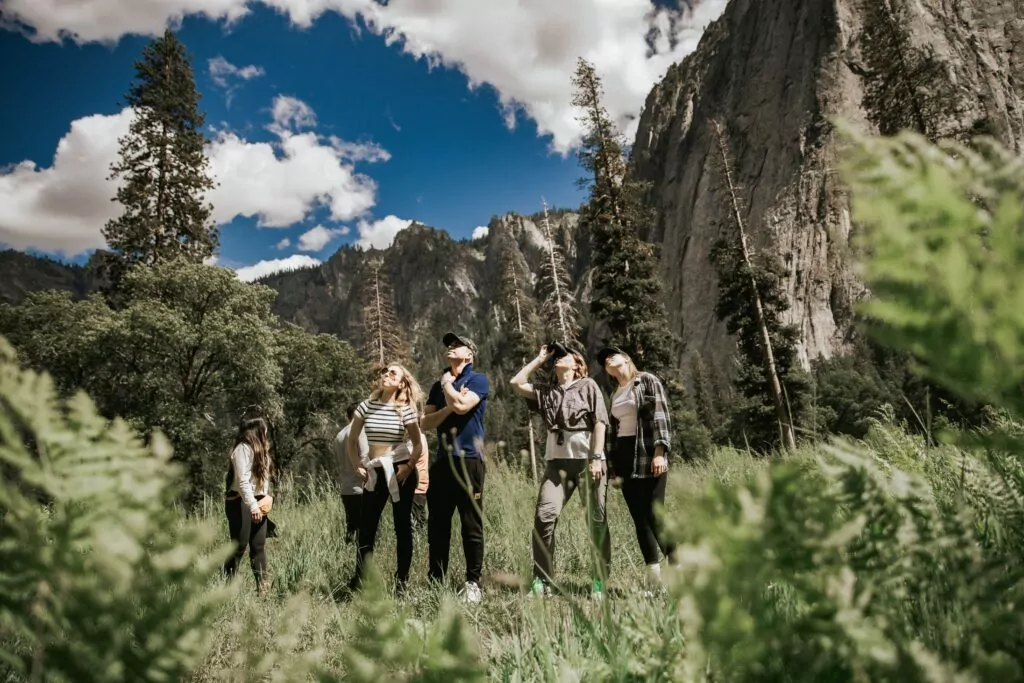
We hope this Yosemite Valley guide has helped you to plan your trip. To wrap up, the number one most important thing is to visit Yosemite Valley safely and responsibly. It’s not the end of the world if you don’t get that Instagram-worthy shot from Tunnel View, or if you encounter cloudy skies when you want to go stargazing.
What really matters is respecting this incredible land and keeping it beautiful for everyone. Stay on designated trails, pack out what you pack in, and don’t feed the wildlife. Seriously — if wildlife becomes dependent on us, it is not good for them or us.
Stay safe by coming prepared and being smart. Stay away from cliff ledges, and know your limits. Hiking at elevation can be a shock to the body, so take your time. Once again, be aware that there is no cell service in the valley, so come with paper or downloaded maps and let others know you will be unreachable.
We hope you enjoy this stunning valley to the fullest! Take time during your visit to breathe deep and appreciate this little slice of heaven on earth.
If you want us to plan your trip for you, join us on one of our award-winning Yosemite Tours.
Yosemite Valley FAQ
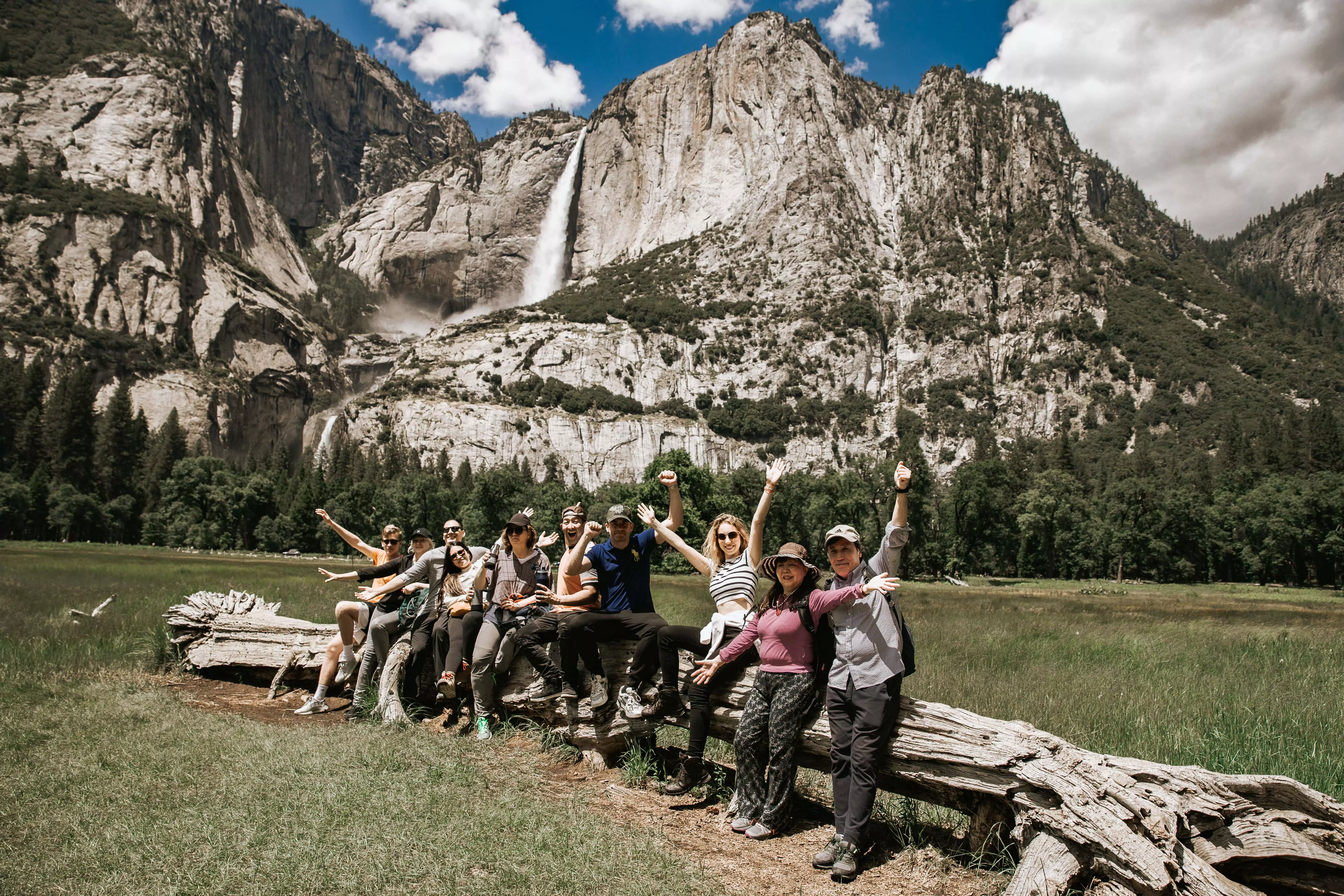
How many days do you need to do Yosemite Valley?
Plan to spend 2-3 days in Yosemite Valley. You can take your time getting to viewpoints, do all of the hikes you want, join a ranger program, and immerse yourself in the natural world. Of course, staying there overnight also allows you to see Yosemite Valley by the light of the stars.
That said, you can see all the major sites in Yosemite Valley in one full day if you plan ahead. The best way to do that is to take a tour. Let someone else worry about the itinerary and transportation so you can enjoy the park.
When is the best time to visit Yosemite Valley?
The best time to visit Yosemite Valley depends on what you want to see and do there. If you’re looking for warm days and snow-free roads, then summer is the best bet. If you’re looking for waterfalls, go in spring. Fall and winter are fan favorites for calmer crowds and wonderful photography.
Do you need a car in Yosemite?
No, you don’t need a car in Yosemite! To get to Yosemite Valley, you can take a tour or public transportation. Once in the valley, the free valley shuttles stop at most major sites, lodging, food, and trailheads from 7am – 10pm. If you plan to stay in Yosemite Valley, parking a personal vehicle can be a headache.
Why is Yosemite Valley famous?
Yosemite National Park was the first area in the United States designated for protection by the federal government. President Theodore Roosevelt and the naturalist John Muir helped bring it to the world’s attention.
Yosemite Valley is also famous for rock climbing. Legendary climbers include Patagonia founder Yvon Chouinard, Royal Robbins, and more recently, Tommy Caldwell and Alex Honnold.
